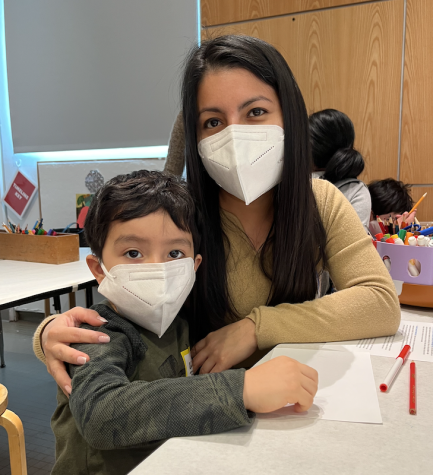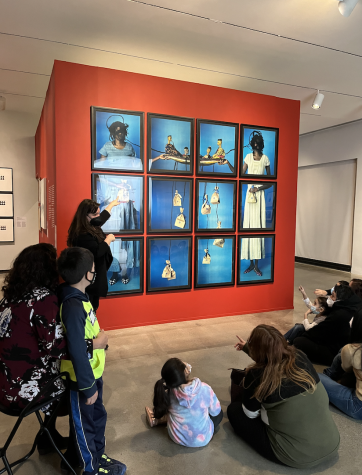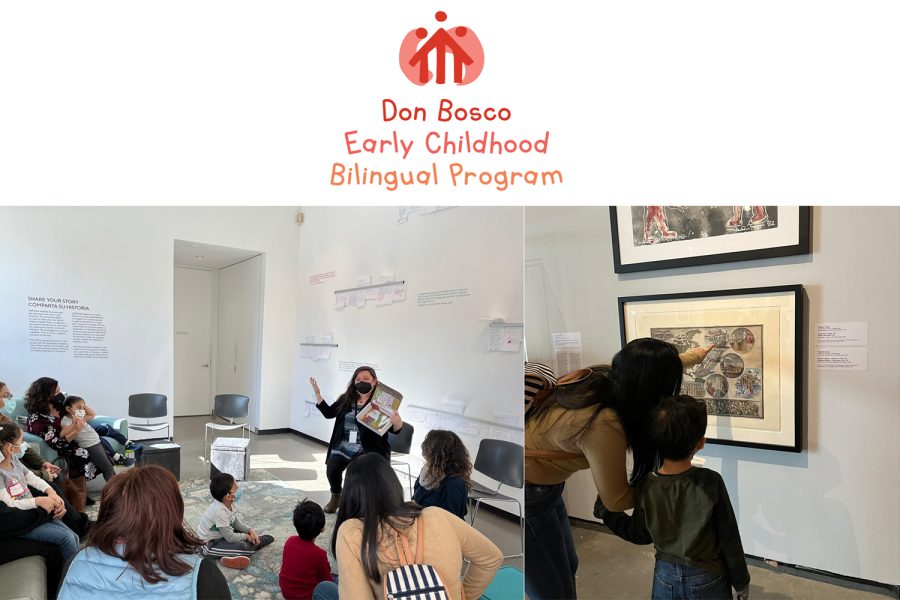Teaching bilingualism and empowering youth at Don Bosco
Through the Don Bosco Early Childhood Bilingual Program, students develop their Spanish and English skills.
Sacred Heart Greenwich senior Megan Maloney, juniors Caterina Pye, Gabriela Pye, Nadia Borja, Martina Bernal, Stefanie Novak, Elsa Latrille, and Gabrielle Wheeler, and sophomore Emma Robredo serve as volunteer interns at the Don Bosco Early Childhood Bilingual Program. In this program, students help three and four-year-old Hispanic children enhance their writing, speaking, reading, and listening skills in Spanish and English. Through promoting bilingualism, volunteers encourage the children to learn and embrace their heritage.
The Don Bosco Community Center is located in Port Chester, New York. Its mission is to empower those in need to become thoughtful and aware citizens, according to donboscocenter.org. Don Bosco runs many programs for children and adolescents. Through the Early Childhood Bilingual Program, children of Hispanic descent learn to write and pronounce the letter sounds of their names as well as gain confidence in their academic ability. The program includes a variety of teaching methods, including storytelling. Children practice how to interpret illustrations and forge connections between books and their own lives.

Don Bosco also provides students with recreational opportunities. Students in the Early Childhood Bilingual Program visited the Katonah Museum of Art in Westchester County January 22. This museum features artwork from a diverse range of artists depicting global issues, according to katonahmuseum.org. Museum guides showed the children and their parents paintings and sculptures that illustrate the challenges of immigration while also emphasizing the beauty of an immigrant’s own culture. The guides also taught the participants how to decipher the story behind the art through examining a piece’s details.
After finishing the tour, the children worked with a parent to create an art project that reflected their culture and personal history. Students drew a family tradition, the flag of their country, and sculpted Play-Doh to resemble their favorite food. When they completed their drawings, students glued each different creation to form a decorated box.
Martina remarked that the bilingual curricula enables students to retain their cultural heritage while developing English skills. She values growing a personal relationship with the children in order to help them grow academically.

“I think that the fact that it is a bilingual program helps the children connect better with their heritage and keep speaking the language,” Martina said. “My favorite part is ‘free time,’ when we can play with the kids and talk to them. I think that building that relationship over time with the children is really great.”
Over the summer, Emma volunteered as an assistant teacher at the program. Since she found the experience rewarding for the children, she decided to continue her work with the program during the academic year. Emma believes a vital responsibility of volunteers is helping the students advance in their communication skills. As a result, they can be more involved in their own culture and American society.
“I think the biggest impact on them is learning new ways to socialize and develop their language while also incorporating English,” Emma said. “I think it is great that they have two ways to communicate with others, which gives them an even more diverse society to live within. I think helping the students learn and manage both languages as such young children really helps them in the future.”
Featured Image by Ana López del Punta ’23

For her final year on the KSC staff, Ana is incredibly grateful to serve as Co-Editor-in-Chief. To help ensure the success of the paper in upcoming years,...


